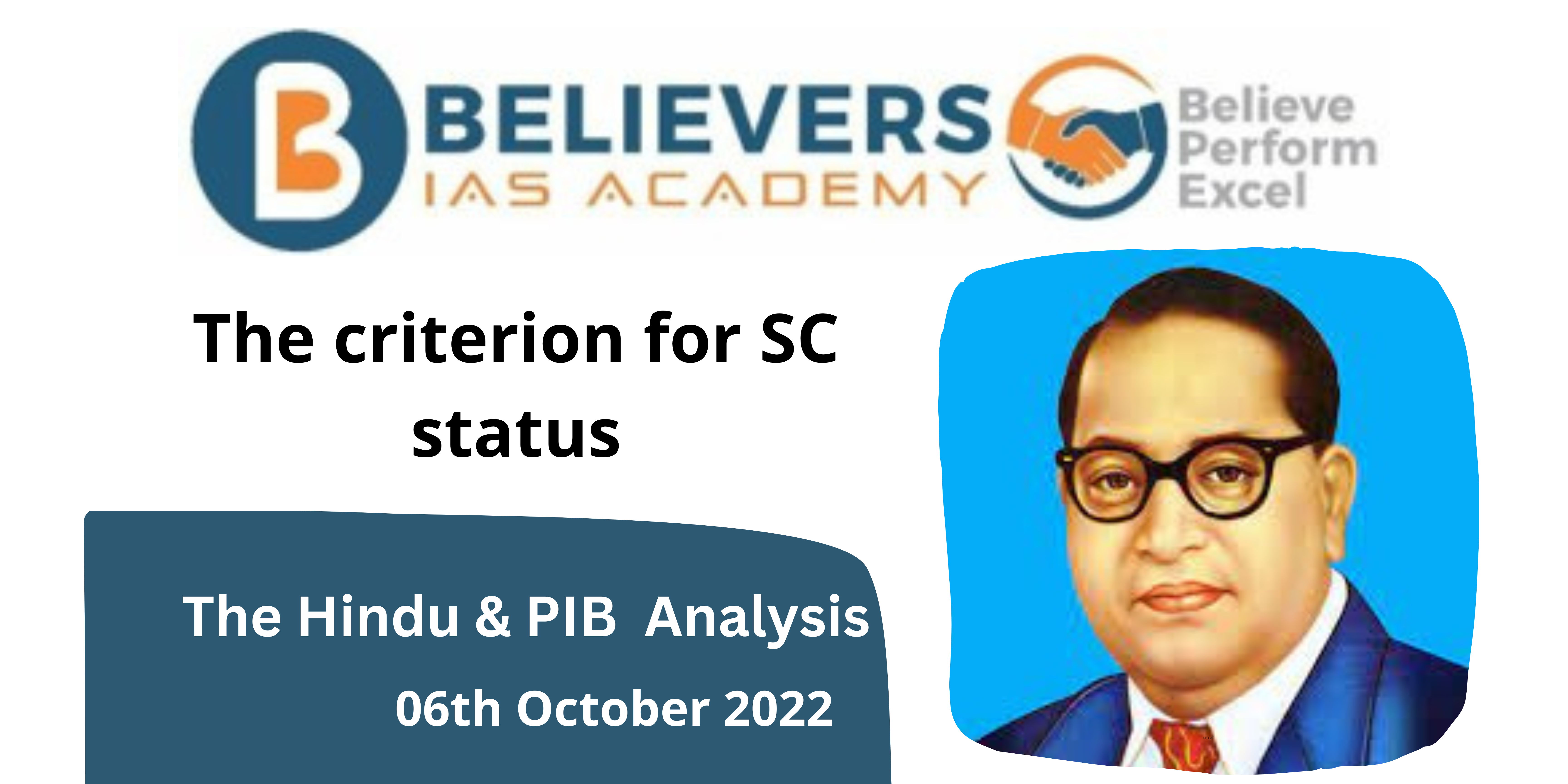The criterion for SC status
#GS-02 Social Justice
For Mains:
Who are currently included in the consideration for Scheduled Caste status?
- The initial Constitution (Scheduled Castes) Order of 1950, provided for recognising only Hindus as Scheduled Castes.
- This Order was later amended in 1956 to include Dalits who had converted to Sikhism and again amended in 1990 to include Dalits who had converted to Buddhism.
- Currently Dalit Christians are excluded from being considered as Scheduled Caste due to Imperial Order of 1936 of the then colonial government, which was the first document which classified a list of the Depressed Classes and it had specifically excluded “Indian Christians” from it.
Why are Sikhs and Buddhists included in the list?
- The decision to include Dalit Sikhs and Dalit Buddhists were taken based on the reports of the Kaka Kalelkar Commission in 1955 and the High Powered Panel (HPP) on Minorities, Scheduled Castes and Scheduled Tribes in 1983 respectively.
Why are Dalit Christians not added to the list?
- The Office of the Registrar General of India (RGI) has been historically reluctant in expanding the ambit of the Order beyond members of Hinduism or Sikhism.
- RGI had cautioned the government that Scheduled Caste status is meant for communities which suffer from social disabilities arising out of the practice of untouchability, which is not prevalent amongst Christians.
- It must be noted that such an addition would significantly swell the population of SCs across the country.
- Clause (2) of Article 341 requires that for any community to be added to SC status, they must belong to a “single ethnic group.”
- However, Dalits who converted to Islam or Christianity belonged to different sets of caste groups and not just one.
Why they need to be included?
Several Commissions have reported that even after conversion, members who were originally from SCs continued to experience the same social disabilities among Indian Christians and Indian Muslims.
Some of which are:
- First Backward Classes Commission’s report in 1953,
- the Report of the Committee on Untouchability Economic and Educational Development Of the Scheduled Castes in 1969,
- the HPP report on SCs, STs, and Minorities in 1983,
- the Mandal Commission Report, the report of the Prime Minister’s High-Level Committee formed in 2006,
- a 2008 study conducted by the National Commission for Minorities,
- the Ranganath Misra Commission Report




